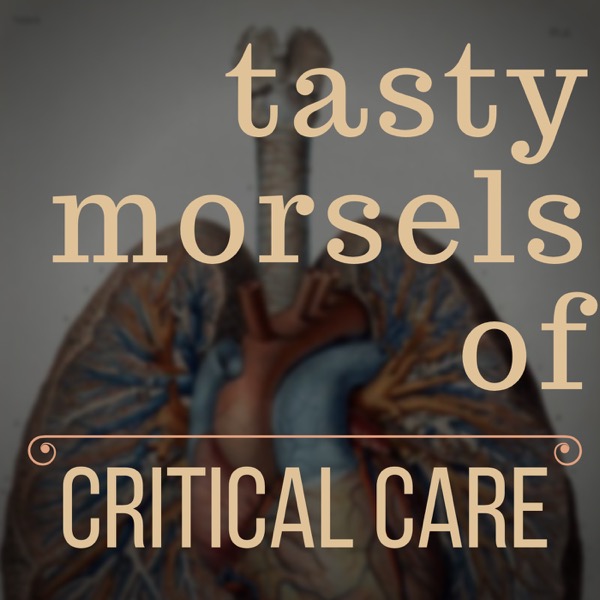Tasty Morsels of Critical Care 036 | Oxygen
Tasty Morsels of Critical Care - A podcast by Andy Neill - Mondays

Welcome back to the tasty morsels of critical care podcast. A meandering monologue through critical care fellowship exam preparation. Today we’re talking a little about that most vital of gases – oxygen. This is going to be back to some very basic physiology from Oh’s Manual Chapter 28, that I probably should have learnt in medical school but honestly looking back I’m not sure I learnt anything in medical school except how to scrape by with the minimum of effort and knowledge. My post graduate career has been somewhat more enthusiastic I might add. Oxygen is that vital substance that we need in order to conduct oxidative phosphorylation which is the body’s most efficient means of producing ATP. For oxygen to get from, say, my left nostril, to a skeletal myocyte in my right tibialis anterior, it has to go through roughly 5 steps * convection of O2 to alveoli (this is ventilation) * diffusion through alveolar membrane * reversible bonding with Hb * transport to tissues (CO dependant) * diffusion to cells and organelles Let’s run through that in a little more detail. Oxygen is drawn in through the big bellows of the lungs and at the alveolus it meets its first real challenge – how to get across the membrane. Here, it obeys Fick’s law of diffusion, where “the rate of diffusion is proportional to both the surface area and concentration difference and is inversely proportional to the thickness of the membrane”. In other words when there’s lots of membrane that is very thin, and not very much oxygen on the other side of the membrane then diffusion is at its best. In apnoea for example the continued blood flow through the lungs draws away any O2 increasing the gradient across the membrane. O2 is drawn through the membrane and in turn more O2 is drawn from the larger airways. This is one reason why apnoeic oxygenation works so well, we see this perhaps most dramatically during the apnoea testing for brainstem death. Simply maintaining a high concentration of O2 in the airways will continue to keep a patient oxygenated even in the absence of bulk flow of gas through breathing. Once diffused into the blood it then joins up with its best friend forever – haemoglobin. Oxygen would much rather be joined to Hb than merely dissolved in the blood. At this stage I am legally required to mention the oxygen-Hb dissociation curve. Despite years of doing this I still cannot get my the left and right shifts stuck in my head. What has stuck in my head is the intelligent adaptation of a system that encourages oxygen offload in areas of the body that are hot, full of CO2 and acidotic – for example muscles working at high load. This might be a rightward or a leftward shift, I really can’t remember but thankfully the human body seems to do it without my input so all is well. This oxy-Hb relationship allows us to move large amounts of oxygen around the body fairly easily. However, of course it is dependant on the cardiac output to get it to where it needs to go. The amount of oxygen the pump can deliver is dependant on flow but also on the oxygen content of the blood. An Hb of 15 will carry more oxygen for a CO of 5L/min than an Hb of 10 for a CO of 5L/min. The oxygen carrying capacity of the blood combined with the CO can be put together to form the oft cited DO2. DO2 is one of those abbreviations for a physiologic concept that has an off little dot above one of the letters and superscript 2 making it altogether difficult to reproduce online without a bewildering number of keyboard shortcuts. DO2 is also best discussed with reference to its partner VO2, indeed combined you can use the term DO2:VO2 relationships in a physiology discussion on a ward round and pray no one asks a follow up question. Perhaps something actually worth knowing is that resting oxygen delivery (DO2) comes in at roug...
